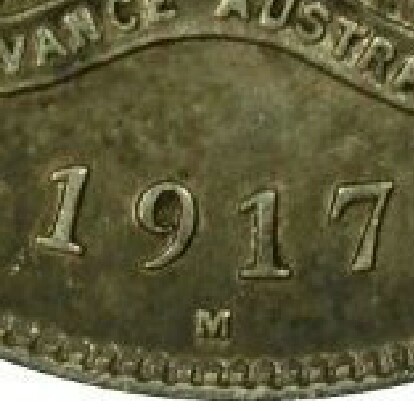



The 1917 Florin was the second year that Florins had been produced at the Melbourne Mint. The total mintage for the year was 4,305,000 which was the largest of the series to date and would not be exceeded until 1940. As a result of the large mintage the issue is relatively easy to obtain with PCGS population reports showing quite good numbers in mint-state. (PCGS, 2017) The cost of obtaining this year is still substantially higher than the later years in the George V Florin series however when compared to all earlier years the 1917-M is the most cost-effective.

After the outbreak of World War I in 1914 the Royal Mint in London became heavily involved in manufacturing military materials. This wartime necessity reduced the Mint's ability to fulfil Australia's demand for new currency. In 1914 and 1915 this problem was resolved by a number of additional coins being produced under contract by the private mint of Heaton & Sons in Birmingham. In late 1915 it was decided that production should shift to Australia and on the 1st of November the Melbourne Mint was instructed to prepare to strike silver coinage. New dies for the Australia Florin, Shilling, Sixpence and Threepence were produced in London for use at Melbourne Mint with a small 'M' mint-mark. Melbourne would continue to produce Florins with the 'M' mint-mark until 1921 when the Commonwealth Government removed the mint-marks as they wanted the dies to be interchangeable between mints in Australia.